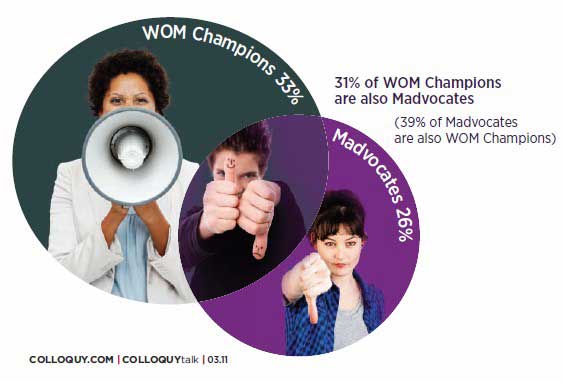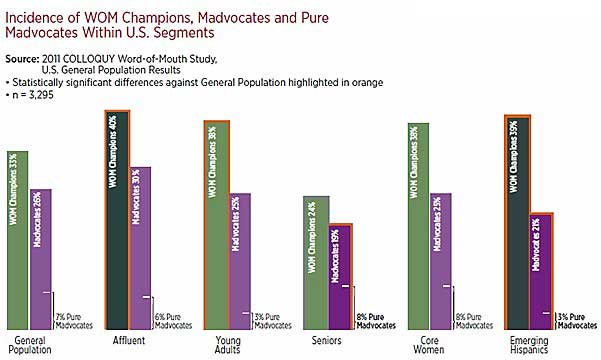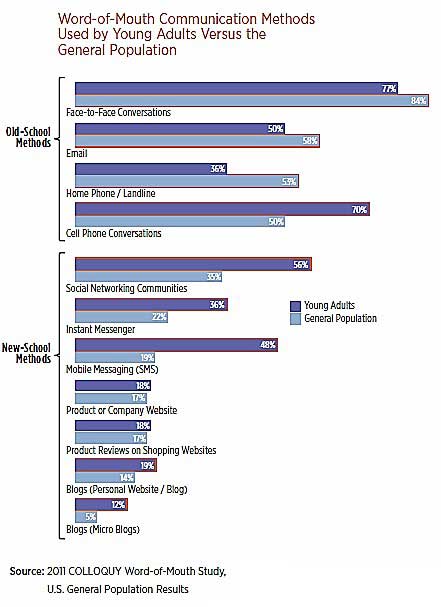More than one-quarter of US consumers (26%) say they are more likely to tell family, friends, and coworkers about a bad experience with a product or service than a good one, according to LoyaltyOne's COLLOQUY report.
Such consumers—defined as "Madvocates" in the report—are predisposed to negative word-of-mouth (WOM) practices after suffering bad experiences with brands.
Interestingly, loyal consumers are even more likely than the general population to sour on brands: 31% of "WOM Champions," consumers who are active promoters for the brands they love, say they are more likely to share a bad experience with a brand than a good one.

"One lesson is clear, hell hath no fury like a Champion scorned," said COLLOQUY Managing Partner Kelly Hlavinka. "Since 'Madvocacy' is an attitude that nearly one-third of all Champions share and are willing to act upon, loyalty marketers must accept their responsibility for the impact their programs can have on generating both positive and negative word of mouth."
Below, other findings from the report, Urban Legends: Word-of-Mouth Myths, Madvocates and Champions, from COLLOQUY.
Madvocacy, by Demographic Segment
The propensity to share negative WOM is present across all demographic groups in roughly similar proportions. Affluent consumers (30%) are the most likely to spread bad news about a brand, followed by young adults (25%) and women (25%).

Seniors (19%) and Hispanics (21%) are the least to share bad news about a brand.
Just 7% of the general population are "Pure Madvocates" consumers who aren't connected to brands and aren't willing to advocate for them, but who are oriented to negative WOM.
Looking for great digital marketing data? MarketingProfs reviewed hundreds of research sources to create our most recent Digital Marketing Factbook (May 2010), a 296-page compilation of data and 254 charts, covering email marketing, social media, search engine marketing, e-commerce, and mobile marketing. Also check out The State of Social Media Marketing, a 240-page original research report from MarketingProfs.
WOM Communications Methods
Social media isn't a major accelerator of brand conversations: 84% of adults communicate about products and services via face-to-face conversations, whereas 35% do so via social media channels. Most adults also use email (58%) and landlines (53%) to share WOM information.

Young adults rely most on face-to-face conversation (77%). However, the younger consumer segment is more likely than the general population to use cell phone conversations (70% vs. 50%), social media (56% vs. 35%), and mobile messaging (48% vs. 19%) to communicate WOM information.
Bad news about brands travels faster than good: 75% of the general population say when they've had a bad experience with a product or service they advise friends and family. That surpasses the 42% who say they always recommend a product or service they really like—and the 67% who say they love telling people about something new they've learned.
About the data: Findings are from a survey of 3,295 US consumers nationwide, conducted by COLLOQUY in December 2010 and published in the whitepaper titled Urban Legends: Word-of-Mouth Myths, Madvocates and Champions, issued in March 2011.



